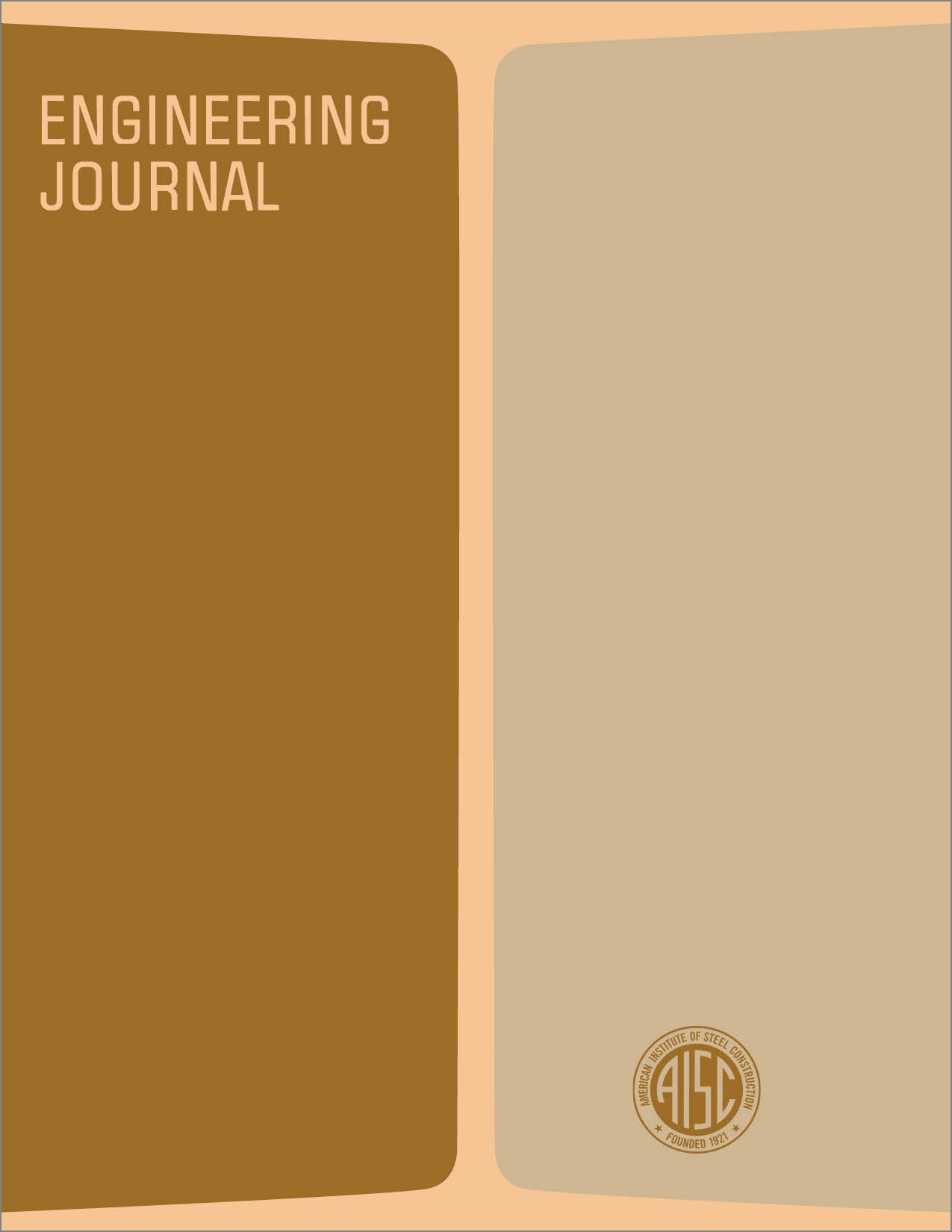Buckling of One-Story Frames
DOI:
https://doi.org/10.62913/engj.v20i2.395Abstract
Two buckling modes can occur in building frames: (1) column buckling of one or more individual members and (2) frame buckling. The two modes can be investigated independently. In the first mode, the column is supported against lateral movements at both ends, but bows between the ends. The surrounding frame provides the lateral support at the ends. In the second mode, the top of the frame moves laterally with respect to the bottom. This paper deals primarily with frame buckling, but also discusses the interrelationship between the two modes. Specifically, it presents a conservative method of determining the frame buckling load from an ordinary (first-order) analysis and suggests compatible methods of checking column buckling of individual members. Methods of calculating the buckling load of frames have been discussed in papers too numerous to mention here. However, the state-of-the-art is adequately covered in two recent books: the Council on Tall Buildings' volume on steel design and the Structural Stability Research Council's guide to structural stability. These two references describe the two main methods of considering frame buckling: effective-length methods and PD methods. To account for the frame buckling mode, the effectivelength methods use effective lengths greater than the actual lengths of the columns. Charts give the effective lengths for single frames that are symmetric with respect to both loading and geometric properties, but the application of these charts is difficult and confusing for more complex frames.

